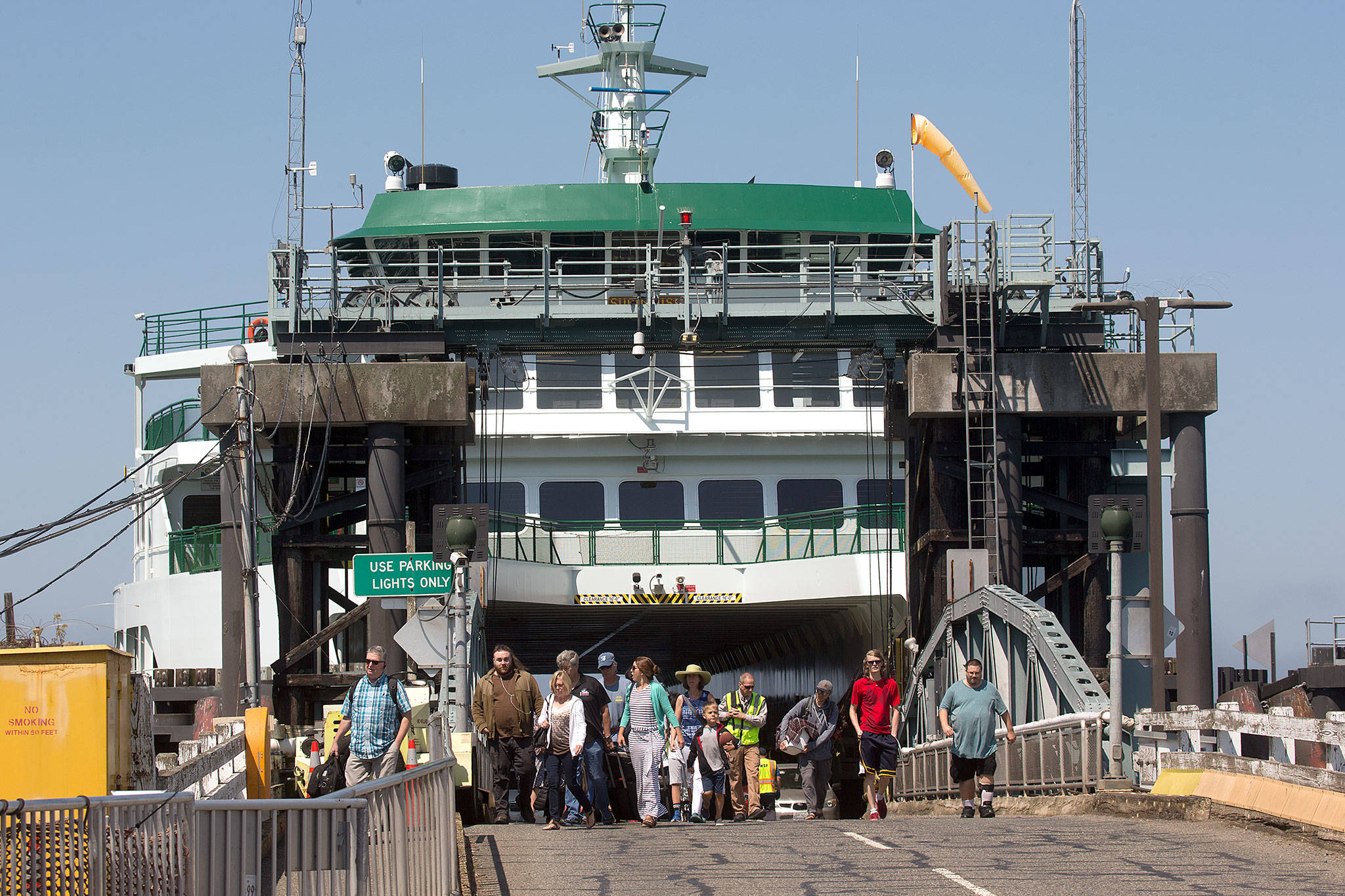The ferry fare increases are good to go.
The Washington State Transportation commissioners Tuesday approved hikes for passengers and cars this fall and again next spring.
The first phase that kicks in Oct. 1 has a 2.5 percent increase for cars and 2 percent for passengers. The second phase, starting May 1, 2020, repeats the 2.5 percent vehicle and 2 percent walk-on increases. It also calls for the capital surcharge, now a quarter, to double to 50 cents on each fare.
“The fare increase is based on the off-peak Oct. 1 fares,” said Reema Griffith, commission executive director.
The plan also calls for an additional 5 percent increase for oversize vehicles on the Anacortes-Sidney, B.C., route. Fares vary by route, and are based on factors such as the distance and vehicle size.
The fare increase is a result of actions by the Legislature and governor.
State lawmakers and Gov. Jay Inslee approved a new transportation budget requiring the ferries come up with $407.9 million in fare revenue in the 2019-21 biennium, which is $9.6 million more than the last fiscal cycle.
The last fare increase was in 2017.
Also Tuesday, the citizen commission approved two pilot programs, including one that could help get people through the toll booths quicker.
That program calls for testing of the electronic “Good to Go!” sticker system, used on highways and bridges, to collect ferry fares at toll booths. The details are to be determined, state government-style.
“This was the first of many steps,” Griffith said. “Now we’ll shift to the working and planning with ferries and the tolls division and DOT. What routes, all that has to be scoped. That will be discussed at commission meetings in the future and there will be more public discussion.”
The other program, contingent on receiving funding from the Legislature, would offer a reduced passenger fare for low-income customers.
Both pilots would run for up to three years.
More than 60 percent of respondents in an online survey favored the programs. The commission conducted the survey throughout July to gather input on the proposed fare changes and pilot efforts.
But in the same survey, about 63 percent opposed fare increases for passengers and standard vehicles. About 10 percent were neutral.
The survey received 1,643 responses.
Of the 10 ferry routes, the largest number of responses came from those who travel on the Mukilteo-Clinton route, which is the busiest in terms of vehicles.
The largest group of respondents, 72 percent, drove on the ferry. About 19 percent were walk-ons.
About one-third were weekly riders and another 29 percent rode daily. About 10 percent rode a few times a year.
The survey also got about 970 open-ended comments.
The fleet of green-and-white workhorses is aging. Of the 22 ferries, 12 are slated for retirement by 2040. The Hyak recently sailed its last voyage after 52 years.
Earlier this year, the state held community forums around the region about the long-range plan and ferry fare increases.
About 50 people attended the Mukilteo meeting in May, when a panel of 16 ferry officials and planners fielded questions and listened to suggestions.
Several ferry commuters spoke in favor of having a “Good to Go!” system to speed up lines at the toll booths. Most regular riders opposed paying more for their daily ride. Some suggested tourists pay up more.



